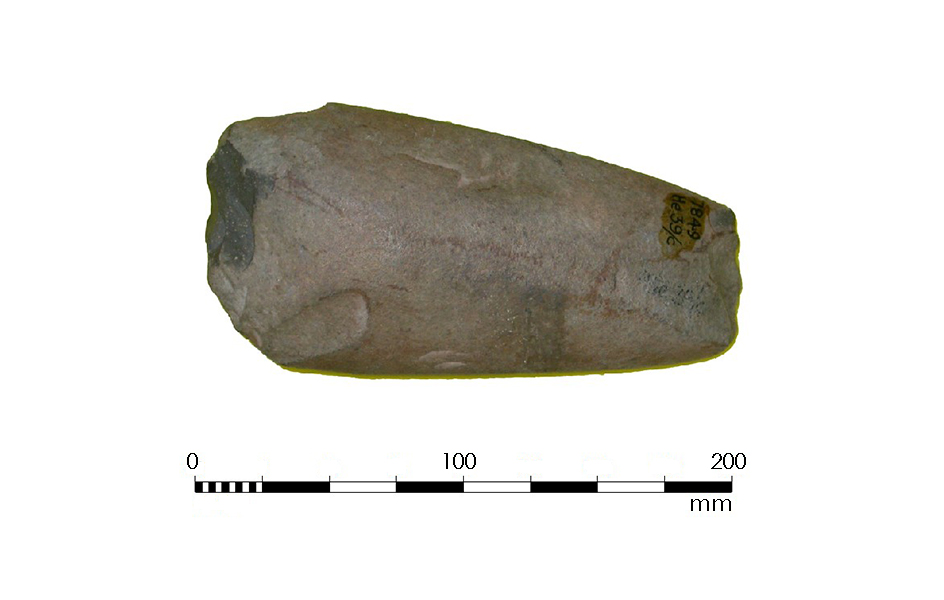
hand-axe from Harewood
The Neolithic period - the New Stone Age - followed the Mesolithic - the 'Middle' Stone Age.
In the standard model there is a lot happening in the Neolithic - domesticating animals and planting crops, building major landscape monuments, making pottery and highly polished stone axes and living in permanent settlements. All of these are commonly perceived to form one cultural package. Actually they are probably better viewed as separate elements which may appear in numerous different combinations or in isolation.
The neolithic 'culture' was certainly imported into Britain. It is not likely that this implies large scale movement of peoples from mainland Europe in the period. The neolithic in Britain is more likely to have developed within a context of 'co-creation' among the inhabitants of southern Britain, Ireland, the Pas de Calais, Normandy and Brittany.
What impact then had Neolithic people upon the landscape of the Hentland area? They were certainly present, and archetypical Neolithic tools - polished stone axes - have been found at Fownhope, Ballingham and Harewood End. At the time southern Herefordshire was probably grassland, grazed by herds of cattle, although sheep and goats are also possible. None of these domestic animals was native to Britain. As Britain was an island by the Neolithic, these animals must originally have been imported by sea. Neolithic cattle were smaller than modern cattle but even so, transporting them by boat must have taxed the ingenuity of people of the time.
The British Neolithic diet consisted mainly of animal products and gathered fruits and nuts - arable agriculture seems to have made a negligible contribution to it. These people were not hunter-gatherers but they were not growing crops to provide daily bread - perhaps we should call them herder-gatherers. The Neolithic people seem to have had a close relationship with cattle. If the people in the study area were cattle herders, they may well have been nomadic.
In Britain, dairying was part of the Neolithic package from the beginning, and analysis of contemporary cattle bones strongly suggests that the age and sex of the animals at early Neolithic sites represent dairy herds. Analysis of the pottery shows that much of it had contained dairy products.
Even now, in some communities, milk and cheese can form a major part of the human diet.The image of Neolithic people clearing large tracts of woodland to grow crops, once an archaeological 'fact' is no longer tenable. Woodland clearance still appears in archaeological terminology of this period and should be treated with caution. It seems improbable that herdsmen would undertake such an activity. Livestock however eats young shoots. In land constantly grazed, new trees can only grow if humans protect them.
Flint tools form the greater part of the evidence for the presence of prehistoric people over the greater part of post-glacial pre-history. Flint for the earlier tools was probably found on the surface of the ground or as river-borne nodules.
In the Neolithic period, flint was mined by means of vertical shafts cut down thorough the chalk to the best flint-bearing strata where horizontal galleries were cut. There is virtually no source of flint in Herefordshire. Flint will not have come from the local rivers - they run west to east and the Welsh hills to the west have no flint in them. The flint sources are all to the east so the material must have been transported in by humans from that direction.